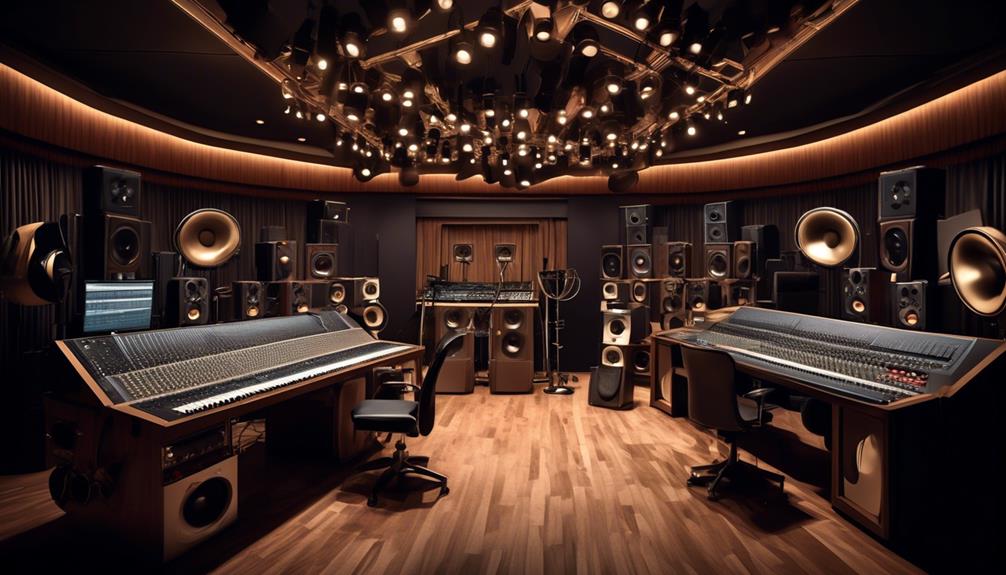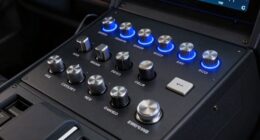Imagine immersing yourself in the symphony of nature as you step into the world of field work, surrounded by the rustling of leaves, the chirping of birds, and the gentle flow of a stream.
But how do we capture and preserve these fleeting moments? What exactly does recording in field work entail?
Join us as we unravel the significance of capturing audio outside the confines of a studio and explore the methods, technologies, and best practices involved in this essential aspect of field work.
Key Takeaways
- Recording in field work captures natural and human-produced sounds, vibrations, and electromagnetic fields.
- It contributes to the development of new techniques and sound libraries.
- Creative microphone placement and sound diffusion enhance the capture of intricate and delicate sounds.
- Accurate documentation ensures the preservation and understanding of acoustic environments.
Importance of Recording in Field Work
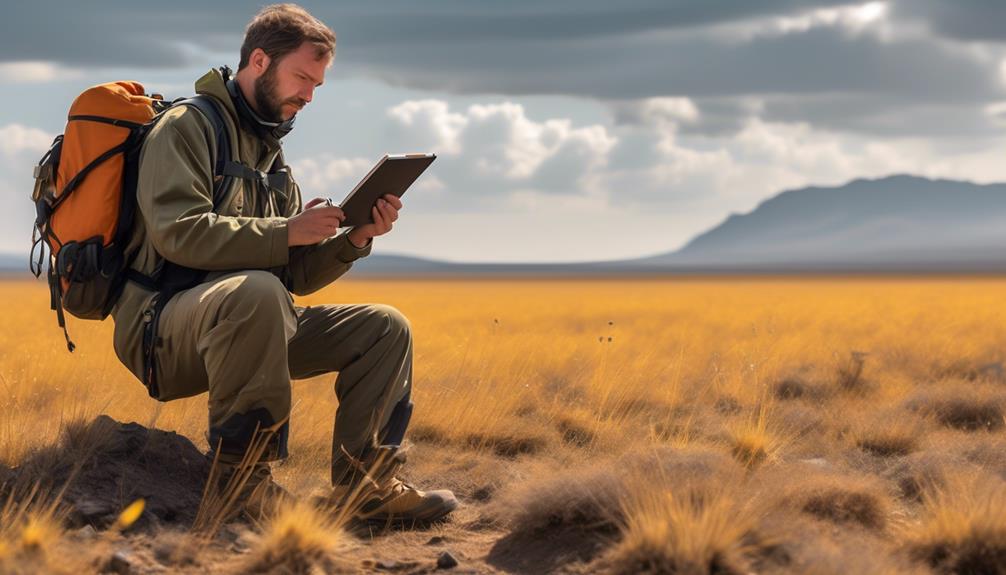
Field recording is essential for capturing natural and human-produced sounds, vibrations, and electromagnetic fields, providing valuable resources for sound designers and contributing to the development of new techniques.
When we embark on field recording, our recording equipment becomes our essential tool for capturing the purest form of sound. By venturing into the natural world, we can capture the intricate and delicate sounds that are often impossible to recreate artificially. The use of high-quality recording equipment allows us to capture the subtle nuances of natural sounds, preserving their authenticity for use in various media.
These natural sounds, recorded in their original settings, provide sound designers with a rich and diverse palette to work with, enabling them to create immersive auditory experiences. Through field recording, we've the opportunity to explore the sonic world and expand our sound libraries with unique and authentic sounds that can enhance any audio production.
The importance of field recording in capturing natural sounds can't be overstated, as it offers a level of depth and realism that's unmatched by synthesized sounds.
Methods for Recording in Field Work
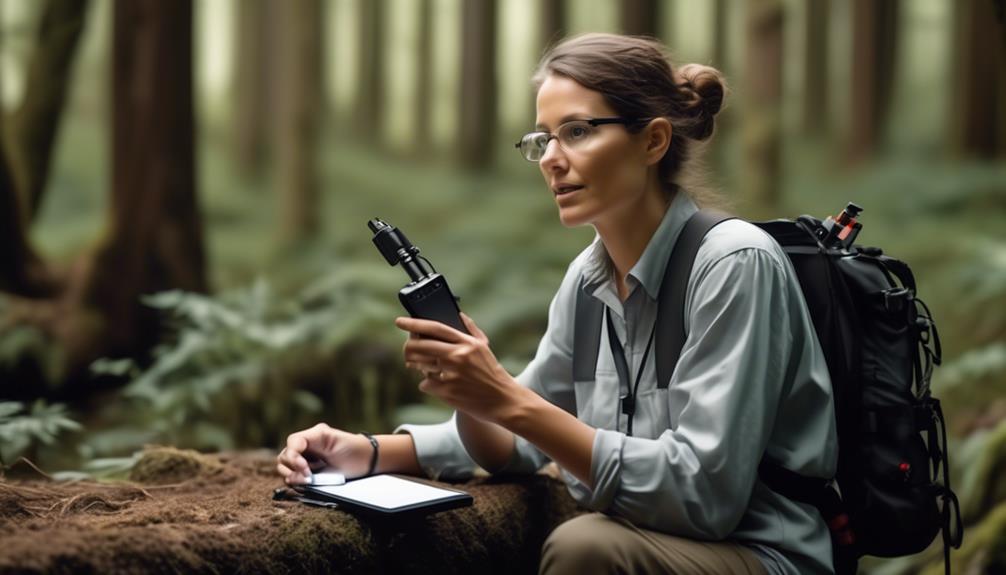
Venturing into the natural world to capture authentic sounds, we employ various methods for recording in field work. Field recording involves capturing a wide range of sounds, including natural phenomena, wildlife, and human activities, to create a rich sonic tapestry.
To achieve this, we utilize high-quality equipment such as professional recorders, microphones, and pre-amplifiers, along with accessories like windscreens and shock mounts. These tools enable us to capture clear and immersive recordings, preserving the nuances of the environment.
In addition to traditional techniques, new approaches in field recording have emerged, including creative microphone placement and the manipulation of sound diffusion to capture unique perspectives. These innovative methods expand artistic expression and contribute to the diversity of field recordings.
As field recordists, we embrace the challenges of working outside controlled environments, demonstrating patience and adaptability to capture the perfect sound.
Technologies for Recording in Field Work
As we embark on the discussion of technologies for recording in field work, our focus turns to the essential equipment and tools utilized to capture authentic sounds in natural environments.
Field recording, crucial for sound designers, necessitates high-quality equipment such as professional recorders, microphones, and pre-amplifiers. Additionally, accessories like windscreens and shock mounts are indispensable for minimizing unwanted noise and ensuring the purity of recorded sounds.
Commonly employed techniques in field recording, including A/B, XY, and M/S, enable the capture of ambient noises and the creation of a wide stereo image, enhancing the immersive quality of recorded sounds. Moreover, new techniques in field recording, such as creative microphone placement and sound diffusion, contribute to artistic expression and innovation, allowing for the exploration of the sonic world in unique ways.
These field recordings serve as valuable resources for sound designers, enriching sound libraries and providing authentic sounds for various media projects.
Embracing evolving technologies and techniques in field recording is essential for staying at the forefront of the sound design industry and fostering creativity in capturing natural and human-produced sounds.
Best Practices for Recording in Field Work
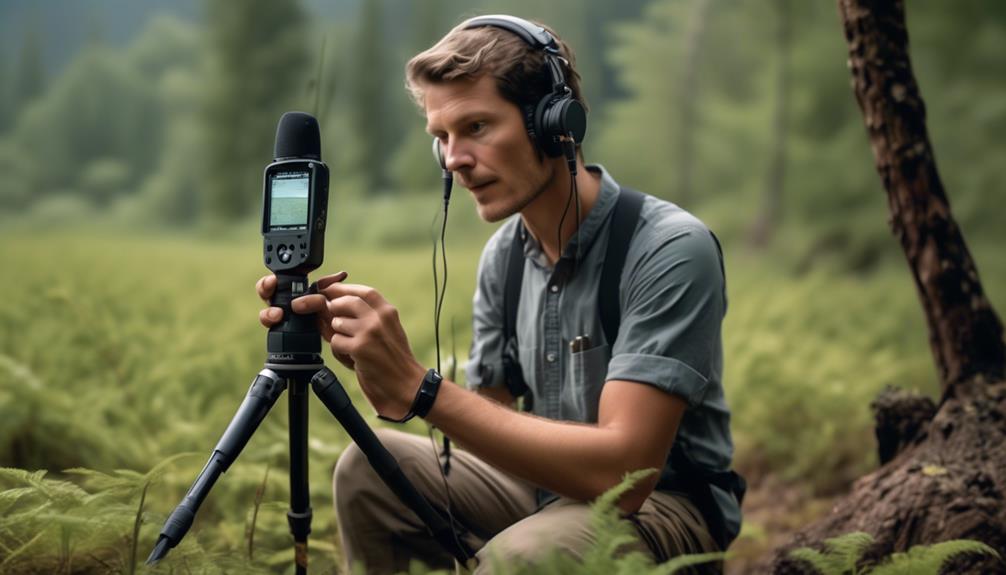
When recording in natural environments, it's crucial to establish clear objectives and plan for the specific sounds to be captured. Field recordists should carefully select the appropriate recording equipment and techniques to ensure high-quality sound capture. Best practices for recording in field work involve thorough research and understanding of the targeted sound effects.
It's essential to consider the environmental factors and potential challenges that may arise during the recording process. Additionally, field recordists should prioritize the use of high-quality microphones and recording devices to accurately capture the desired soundscapes. Proper microphone placement and experimentation with different recording methods, such as A/B, XY, and M/S techniques, can significantly impact the quality of the recordings.
Furthermore, field recordists should explore innovative techniques, such as creative microphone placement and sound diffusion, to add artistic value to their recordings. By incorporating these best practices, field recordists can enhance their sound libraries, provide unique and authentic sound effects for various projects, and push the boundaries of audio production through creative and experimental approaches.
Ensuring Accurate Documentation in Field Work
After establishing clear objectives and selecting the appropriate equipment for recording in natural environments, ensuring accurate documentation in field work becomes paramount. This involves meticulous recording of observations, measurements, and sounds. We must utilize high-quality equipment, such as professional recorders and microphones, to capture comprehensive and precise field recordings. Implementing various recording techniques, such as A/B, XY, and M/S, allows for the accurate capture of ambient noises and the creation of a rich sense of ambiance. It's crucial to embrace new techniques, such as creative microphone placement and sound diffusion, to expand the possibilities and artistic expression in field recording.
| Field Work Documentation | Importance |
|---|---|
| Observations | Crucial |
| Measurements | Essential |
| Sounds | Paramount |
| Equipment | High-quality |
| Techniques | Diverse |
Our approach to accurate documentation is rooted in the pioneering work of individuals like Ludwig Koch and Pierre Schaeffer, who laid the foundation for the art and science of recording sound in the field. Field recording serves various purposes, including enhancing sound libraries, providing authentic sounds for projects, and promoting exploration of the sonic world. By ensuring accurate documentation, we contribute to the preservation and understanding of the natural and human-made acoustic environments.
Frequently Asked Questions
What Are Types of Field Recording?
Types of equipment for field recording include:
- Portable recorders
- High-quality microphones
Environmental challenges, such as wind and background noise, require:
- Strategic placement
- Use of wind protection
Audio techniques like A/B, XY, and M/S are used to capture:
- Spatial sounds
- Ambient sounds
Data collection methods involve:
- Organizing
- Cataloging recordings for easy retrieval
It is crucial to consider the context and purpose of the recordings to select the most suitable equipment and techniques.
Why Is Field Recording Important?
Field recording is crucial for capturing the essence of the natural environment and preserving sound quality for storytelling. It's important because it allows us to transport listeners to different worlds, evoking emotions and immersing them in a story.
The authenticity of field recordings adds depth and realism to audio productions, enhancing the overall experience for audiences. This importance can't be understated, as it sets the stage for unparalleled sonic exploration and creative expression.
What Do You Need for Field Recording?
For field recording, we need top-notch field equipment like professional recorders and high-quality microphones to ensure excellent sound quality.
Environmental impact is minimized by using efficient data collection techniques.
It's crucial to have a good understanding of various recording techniques such as A/B, XY, and M/S for capturing ambient noises and creating a rich stereo image.
These elements are essential for successful field recording endeavors.
What Is the Difference Between Field Recording and Studio Recording?
Field recording captures the raw, unfiltered essence of live sound in an outdoor environment, presenting unique technical challenges. The key difference between field recording and studio recording lies in the environment; field recording captures the natural ambience and unpredictability of outdoor spaces, while studio recording provides controlled conditions.
This demands adaptability and a deep understanding of sound dynamics, making it an art form in itself.
Conclusion
In the world of field work, recording is our compass, guiding us through the symphony of nature and human activity.
Like capturing lightning in a bottle, these recordings preserve the soul of our surroundings, allowing us to share the heartbeat of our world with others.
So let's continue to capture these moments, like a painter with their brush, adding vibrant strokes to the canvas of our experiences.


